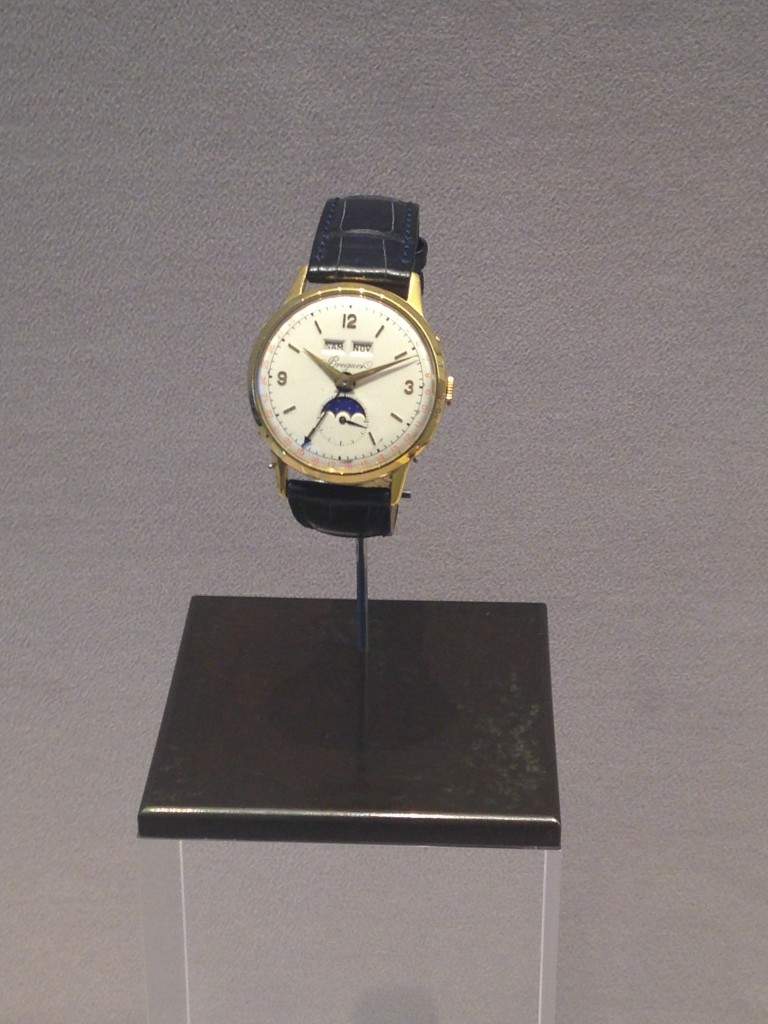The answer is pretty clear. Ask serious watch collectors, connoisseurs who the most important watchmaker and inventor is, then one name will keep on coming up.
Louis Abraham Breguet.
He not only built the most complicated pocket watches and chronographs in the world, but also invented entire complications.
Today most high end watch makers pride themselves on building the complication known as tourbillon (a complication which simply stated helps the watch maintain accuracy despite different positions the watch is exposed to). The tourbillon was invented however by (any guesses)? Yes, Louis Abraham Breguet.
Without him this complication would not exist. If that was not enough Breguet also invented the overcoil – also known as the ‘Breguet Spiral’ which helps the watch maintain accuracy.
In the history of important clocks and watches nobody was more important an inventor and watchmaker than Breguet.
His client list read like a who’s who of European Royalty: Marie Antoinette (for whom he built the most complicated pocket watch in existence), The Duke of Wellington, King George IV, Alexander I of Russia (which partially explains why Russian love Breguet today) and Napolean Bonaparte.
Today the brand Breguet is owned by the Swatch Group which is solely due to the vision of Mr. Hayek who recognized the tremendous history and innovation of Breguet. In the world of high end ‘Haute Horlogerie’ or high- end watchmaking, Breguet sits near the top of the pyramid along with other names such as Patek Philippe and Vacheron Constantin.
So when I found out that in there is a little ‘Breguet Museum’ in Zurich I jumped at the chance to learn more about the past of this great brand. The Museum is located at the top floor of the Breguet retail store located at Bahnhofstrasse 31, 8001 Zurich.
The first picture shows the so called ‘Subscription watch‘.
The pocket watch only has one hand and it was important in Breguet history as customers had to make a down payment in order to buy the watch.
Up untill then Breguet allowed their customers to order a watch without any upfront payment. This watch is also the first watch which Breguet advertised officially.
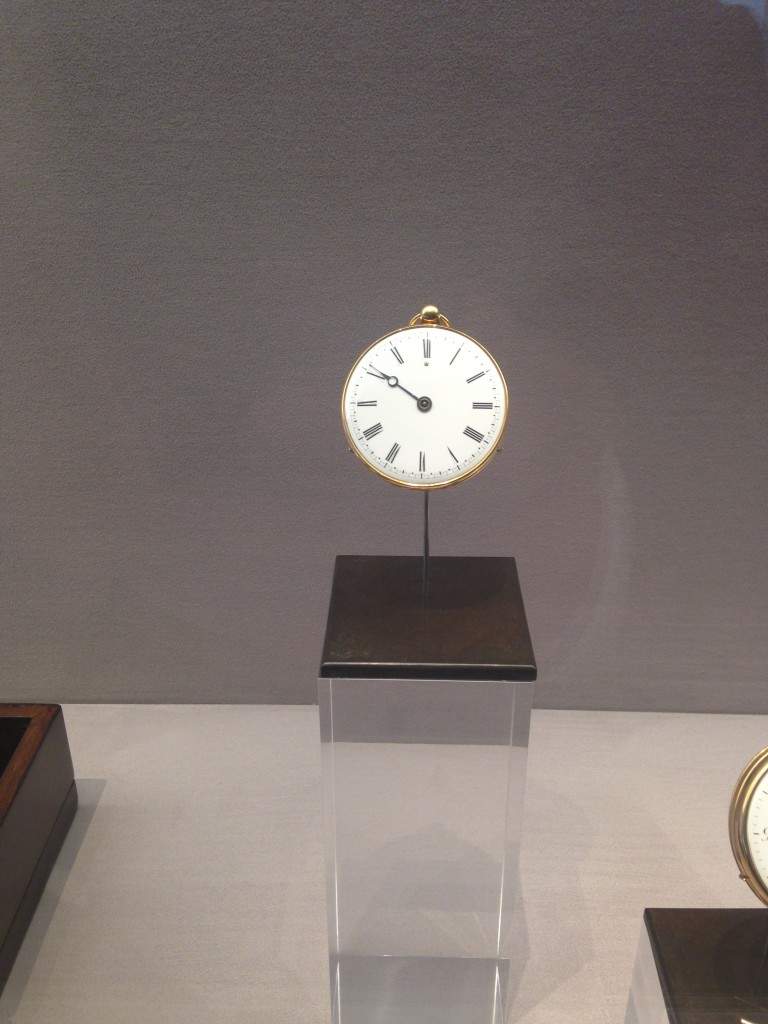
The watch below shows a ‘Tast Uhr‘ or touch watch. It was made for men or women who wanted to tell time discretely and thus could feel the watch and tell the time just by ‘the feel’ of the hand while keeping it in their pocket.
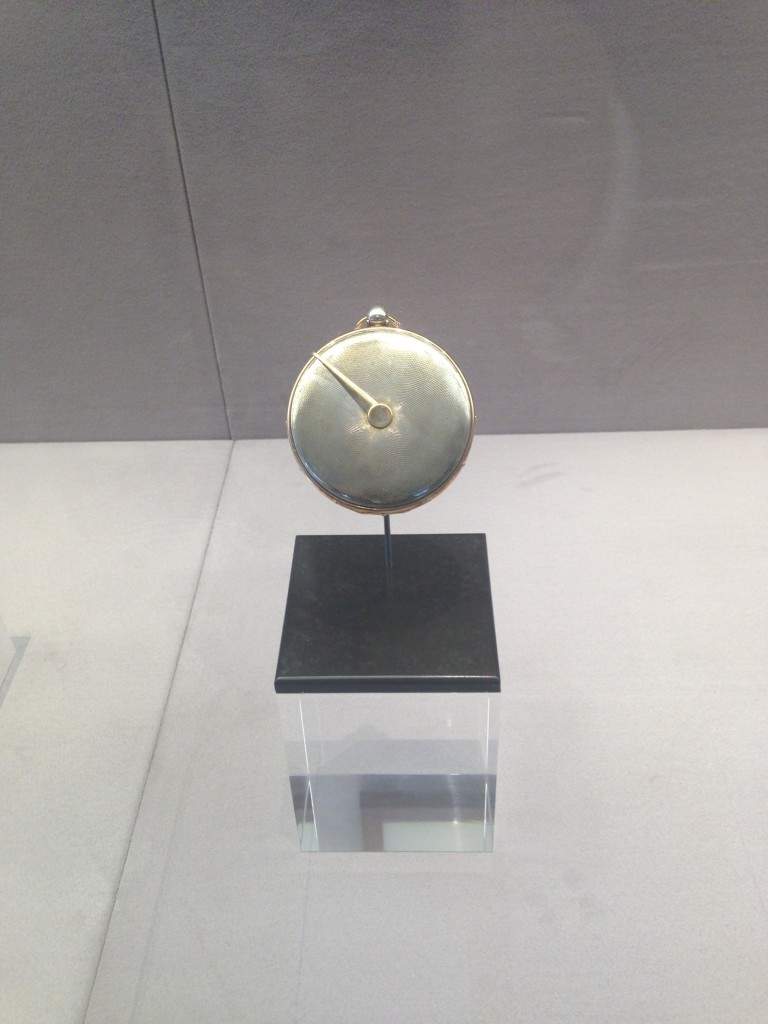
The next pocketwatch below shows a watch made for the ‘Turkish market‘.
The problem was that during the French revolution under Napoleon Breguet could not rely on this traditional market like France and Russia so he designed watches for the Turkish market. Notice the fine decoration on the side.
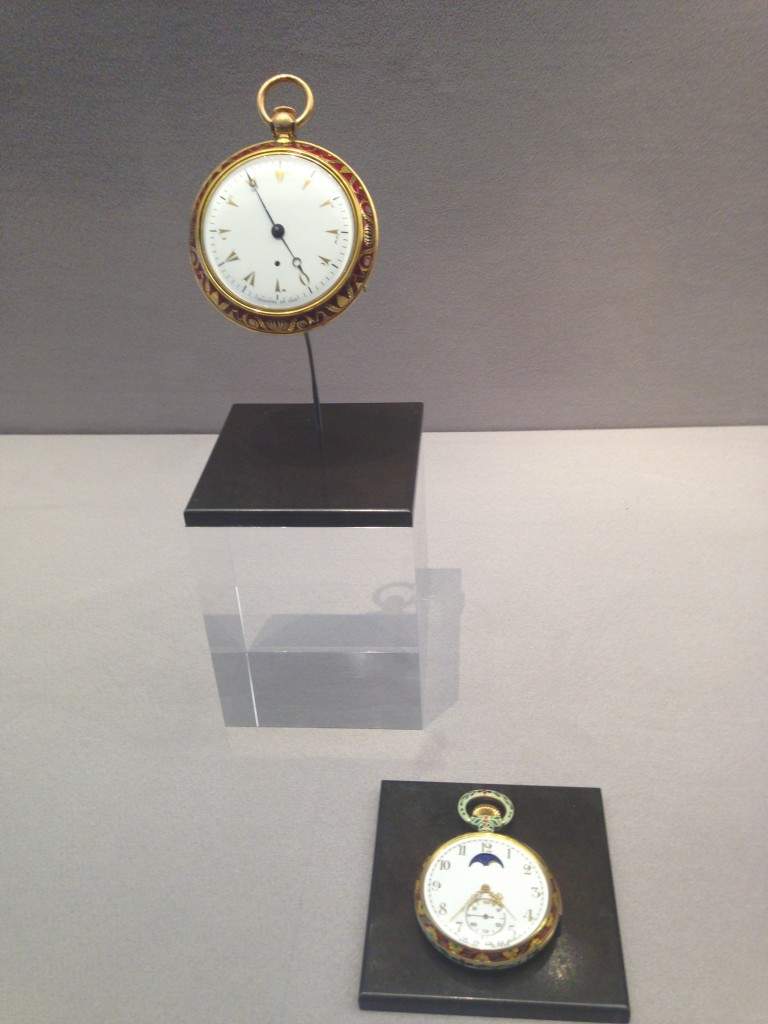
Breguet was known to make some of the most beautiful desk watches in the world. Below a fine desk watch with ‘Annual calender‘ function.
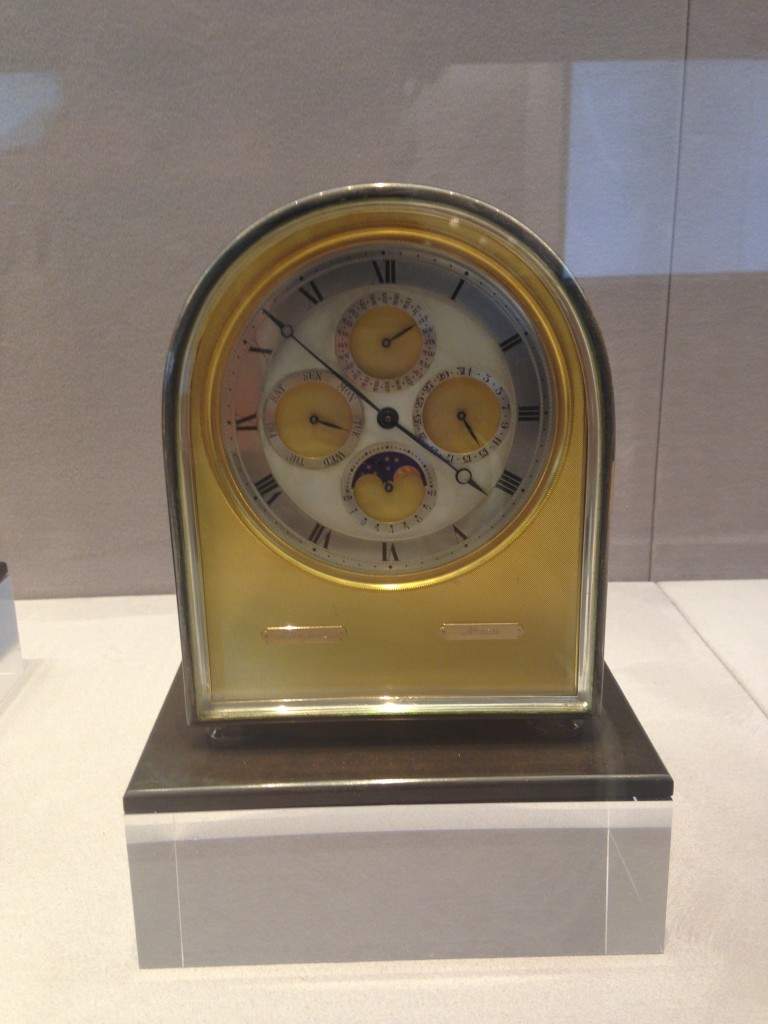
Ever wonder where the name ‘Breguet numerals’ comes from? Well you guessed it, from Breguet. Below a fine pocketwatch with ‘Breguet Numerals’ on the dial.
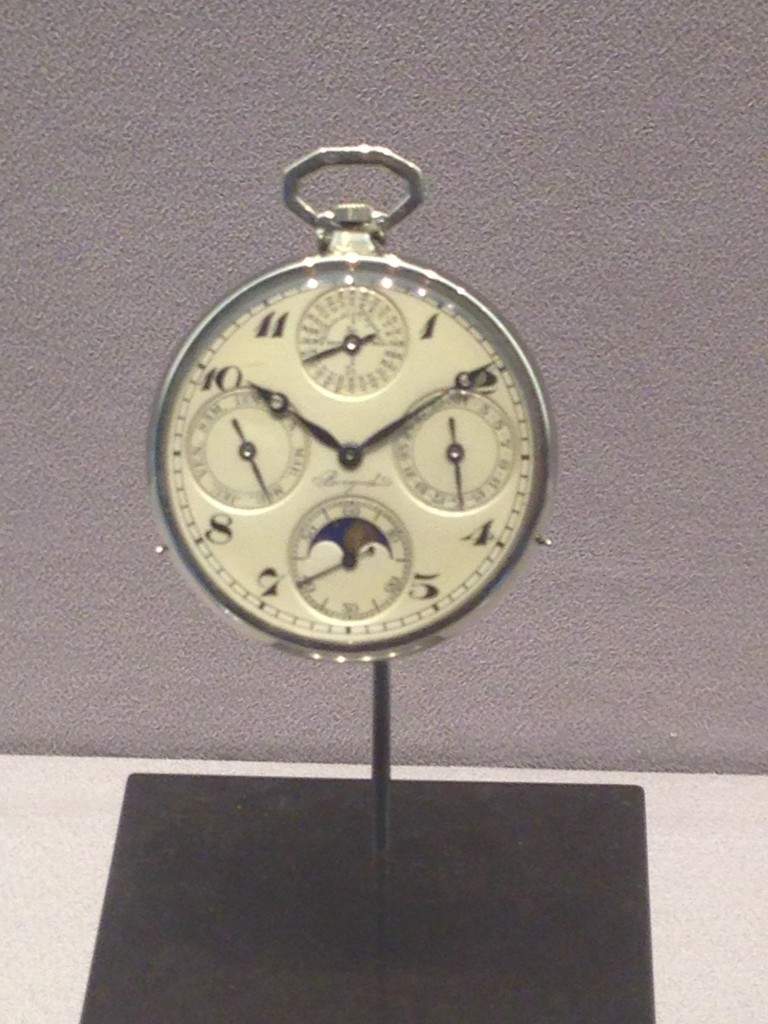
The watch below is a so called ‘Faton Chronograph‘ made in 1845. It was called ‘Faton’ because it used ink to mark the elapsed time.
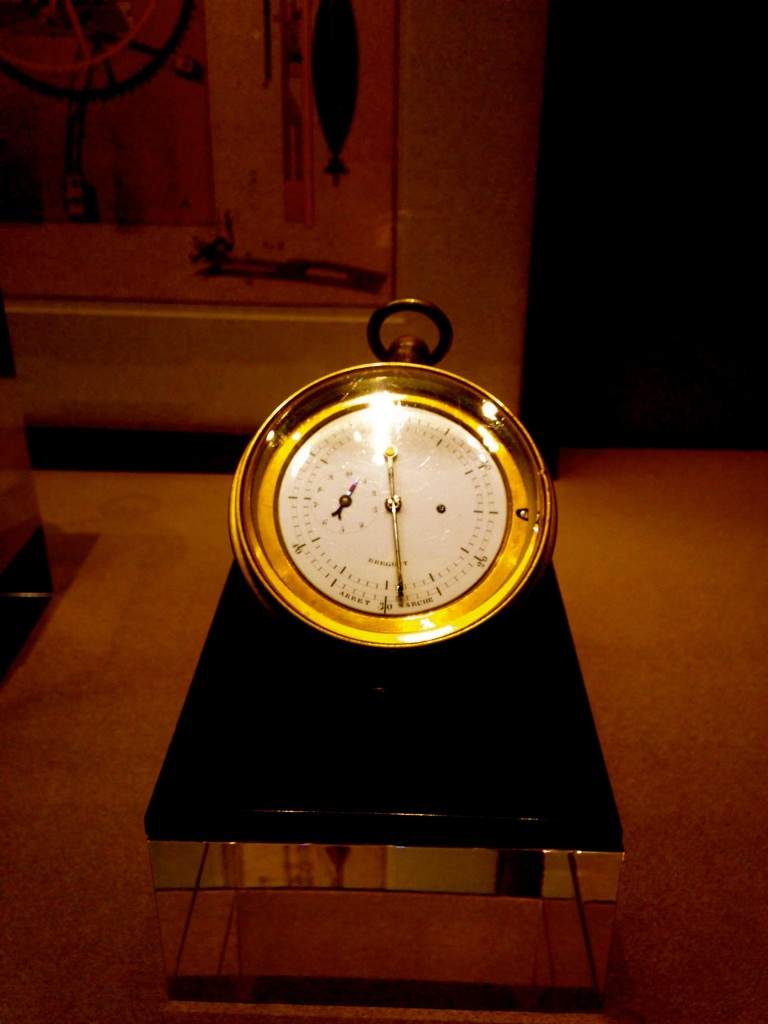
The next watch should delight LME readers: A chronograph pocketwatch given to Ettore Bugatti!

Lastly a watch which could also be a Patek or a Vacheron. In the 1950s and 1960s Breguet to please a conforming market produced some fine ‘Triple calender wristwatches‘.
